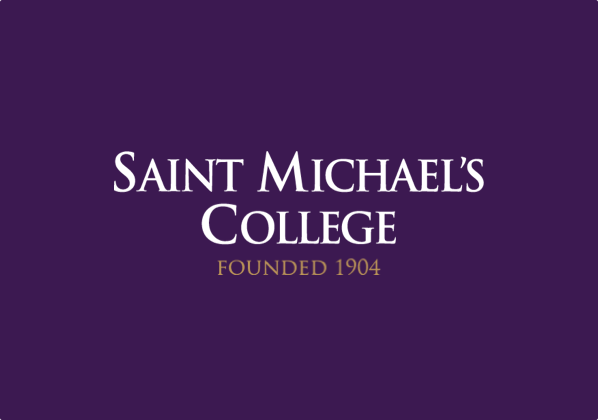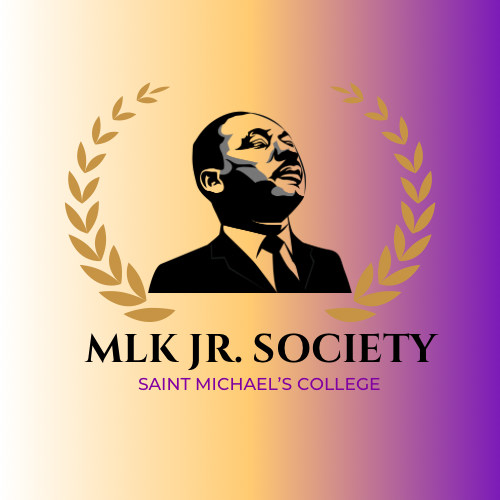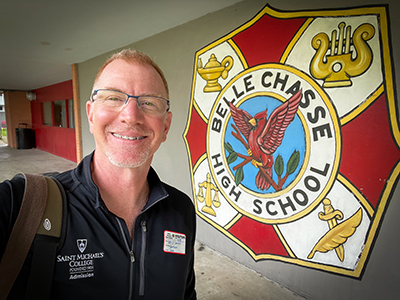Data Science steps out to a liberal arts tune
The most employable data analysts and statisticians in 21st century jobs will need more than just the technical and math training that equips them to meet squarely a tsunami of high-tech information flooding fields as diverse as public health, government or community policing, say curriculum leaders at Saint Michael’s College in Vermont. The best analysts also will possess the creativity afforded by broad liberal arts education to make something substantial and useful from so much data.
Such was the thinking behind new Data Science and Statistics majors at Saint Michael’s. The Catholic college of just under 2,000 students, like so many small New England liberal arts colleges in recent years, has been working hard to counter a significantly shrinking pool of high school graduates – a demographic that makes recruiting quality classes more competitive every year. One proactive answer has been to develop new programs that will be attractive to students of the 21st century, said Karen Talentino, the College’s vice president for academic affairs.
Although a statistics major is somewhat common at larger universities, majors in statistics and especially in data science still are relatively rare at liberal arts colleges, she said, and Saint Michael’s aims to strike while the iron is hot. Michael Larsen, a newly hired Harvard-trained scholar of statistics and data analysis who will develop and teach classes in the new St. Mike’s majors, explained why the timing is good: “These are emerging fields, so the education that people get will essentially help them define what the fields become,” said Larsen, “and they can take leadership in areas that are branching out like never before.”
Greta Pangborn, a Cornell-trained professor of computer science at Saint Michael’s who will teach courses within the new majors, said students will be exposed to some key algorithms for artificial intelligence or “machine learning” — a hot topic in the media these days. “We hope it will allow them to see the utility tools, but also recognize what is sometimes buzzword hype. Students will grapple with the ethical implications of these tools in our program.”
Talentino said that “regardless of what industry or discipline a student might want to go into, anybody with a background in statistics/quantitative analysis is going to stand shoulders above any other candidate. You can pair these with any other major or as a minor and it will play well in the employment marketplace.”
Larsen said a background in statistics “is useful broadly in jobs, in graduate programs and just in general in a lot of aspects of life –and I think we’re at a special point where computing and the availability of data are where you can really try to do some exciting things.”
He offered examples: “In medicine, large-scale health surveys can be linked to electronic records to provide a broader picture of factors influencing our health, or governments can use electronic records to tell them useful things about communities,” said Larsen, who also mentioned how the Burlington, VT, Police Department “has an open-data initiative that helps officers do their job better and informs citizens about the use of force and social justice issues involved with policing.”
Many employers, whatever the industry, are interested in analyzing their customer data bases and market information on the internet, Larsen said, “and somebody who can do something creative and efficient with data can really be useful.”
Pangborn said a number of her recent graduates in math/computer science have gone on to work in the data science field already. The discipline’s emergence was a recent focus in such major publications as Forbes, sparking interest among current and prospective students. “I think students benefit from learning about a variety of disciplinary perspectives, which is a goal of a liberal arts education” Pangborn said — “including a data science perspective.” Even one or two courses would benefit a student, she and Larsen said.
Pangborn also said that students interested in policy questions related to technology “need to have an understanding of technology to make good decisions” For example, if a student is interested in privacy questions, “they need to understand how data is collected online, stored and processed.”
Talentino said Saint Michael’s faculty already was so strong in STEM-related disciplines that the new majors were natural additions. All the new Saint Michael’s majors are slated to be open to incoming first-year students next fall, pending approval by the Board of Trustees, and current juniors could aim to complete either the data science or statistics minor next year, enhancing their field research capabilities if they discover a chosen field such as psychology requires specific data skills.
Pangborn said recent studies indicate that “employers are very interested in these skills and that students with data science and statistics skills have a significant advantage when looking for a position.” As Larsen puts it, “These fields can train people to be better users of all this information that is more readily available than ever before.”
Talentino said another new St. Mike’s major starting in Fall 2018 besides Data Science and Statistics will be “Education Studies,” which aims to offer flexibility to those who may not want to become a licensed classroom teacher, yet hope to be educators in some capacity, perhaps at a museum, or about the environment, or for private schools in areas of special interest.







